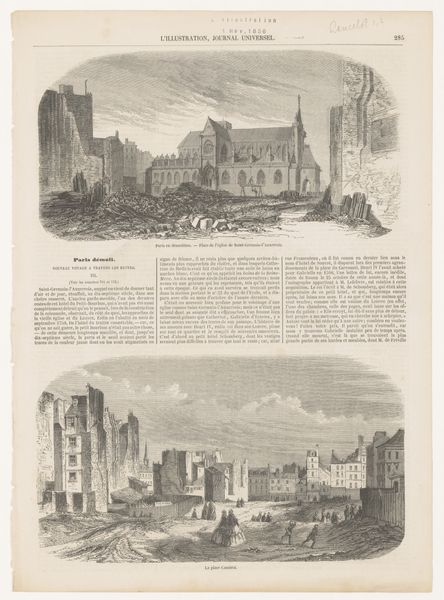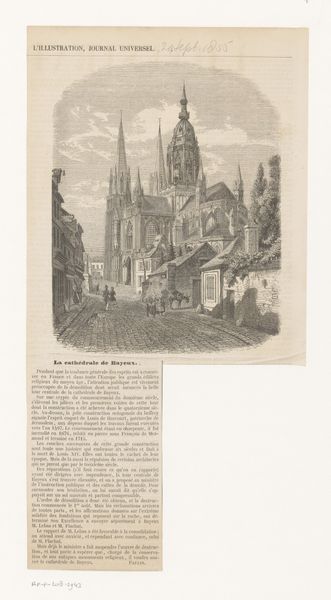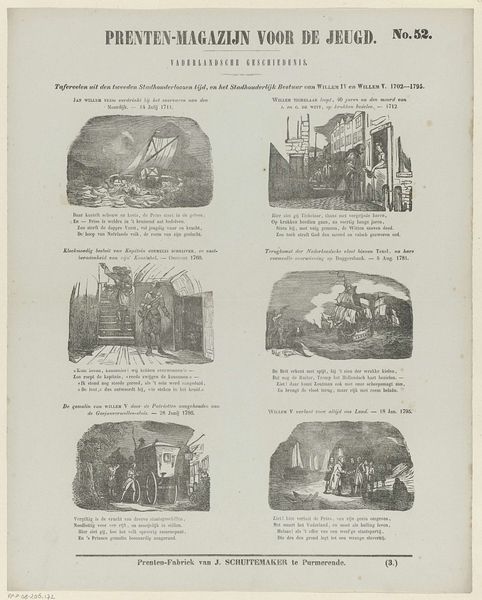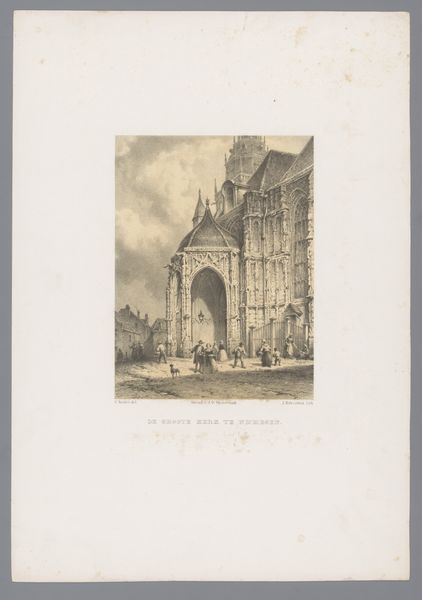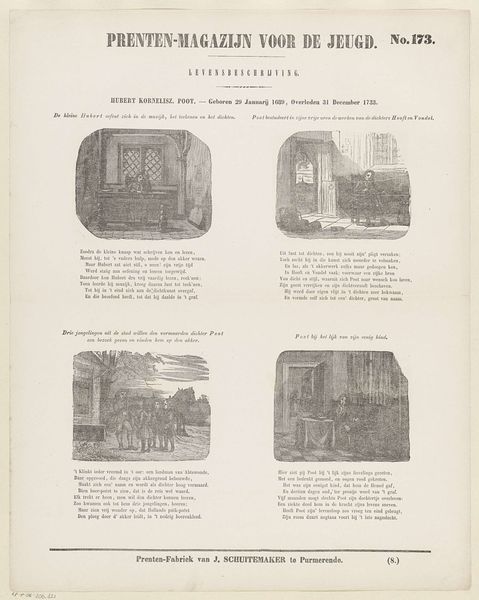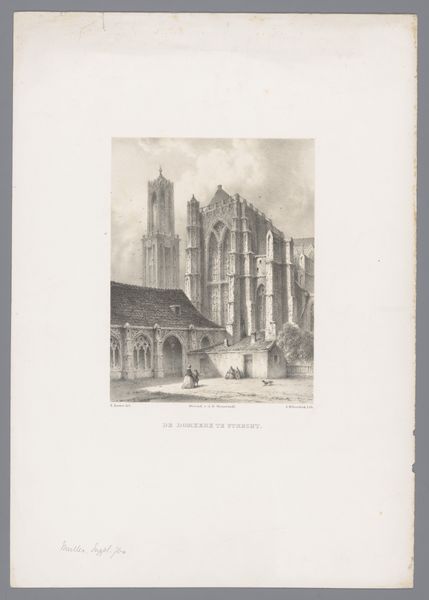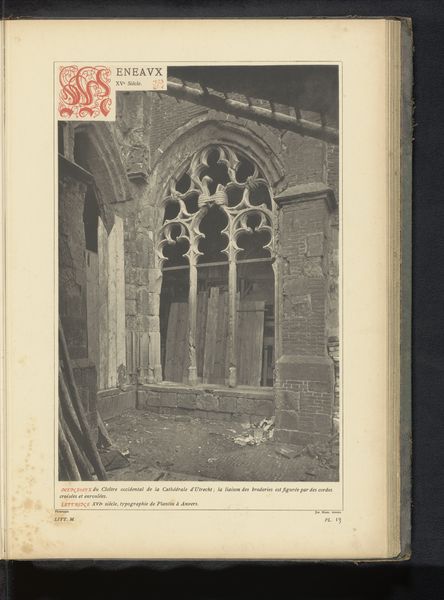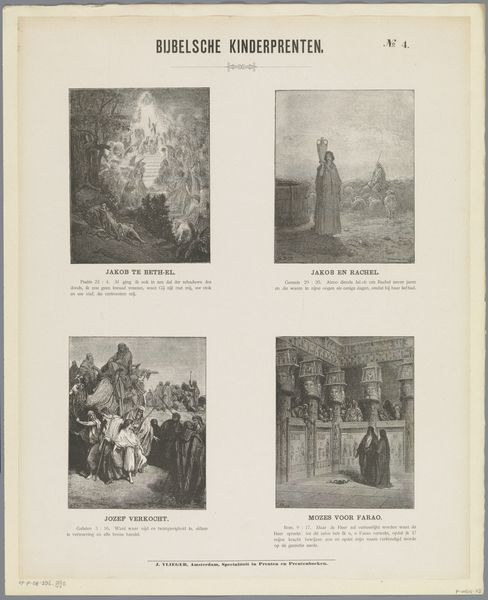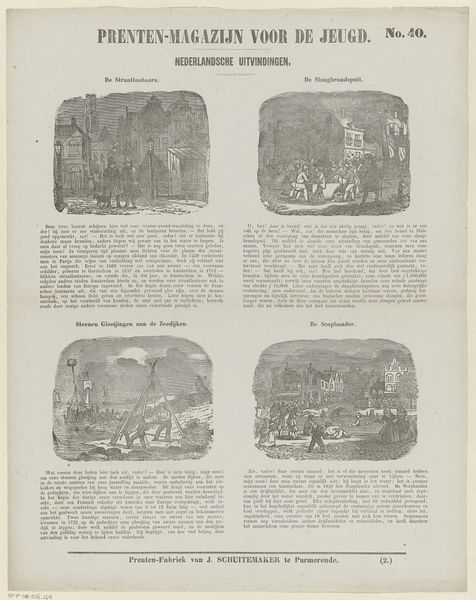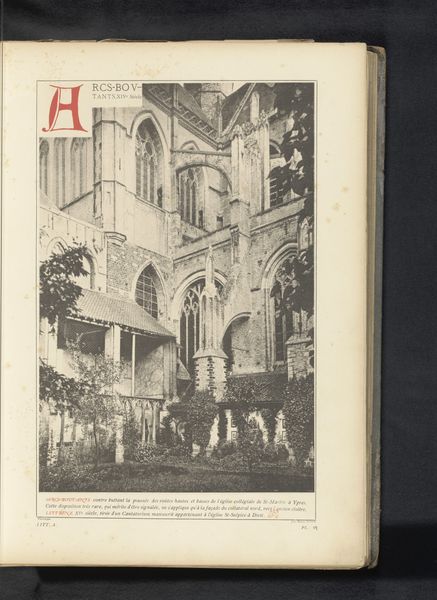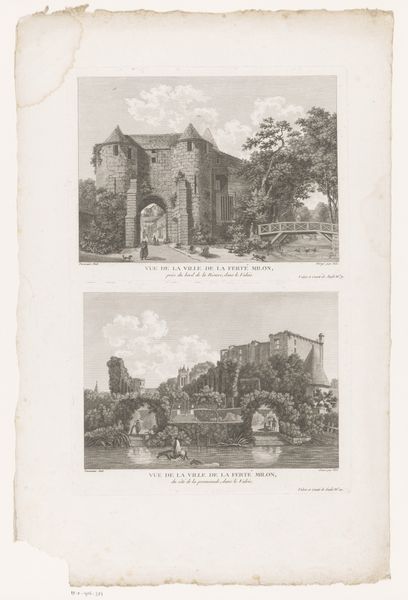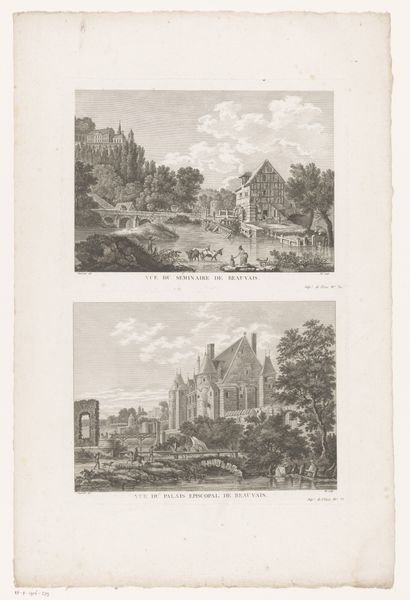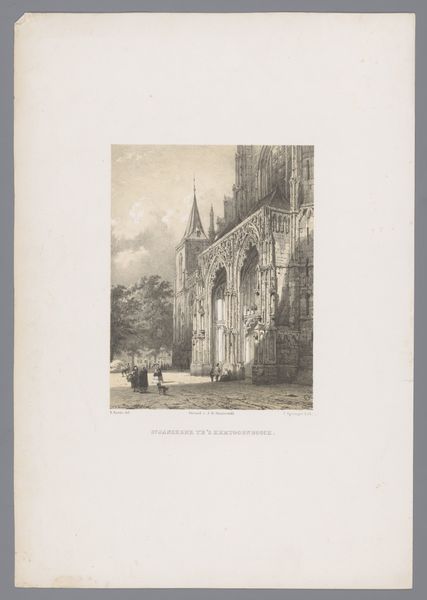
Dimensions: height 365 mm, width 260 mm
Copyright: Rijks Museum: Open Domain
Curator: Welcome. We’re standing before an 1864 engraving by F. Roevens entitled, "Vijf voorstellingen met Le Mont Saint-Michel als onderwerp"—which translates to "Five Presentations with Le Mont Saint-Michel as Subject." Editor: It strikes me as intensely detailed. A network of tiny marks renders impressive architectural mass and receding perspective. But there’s also a sense of confinement... a somber gray tonality blankets the entire surface. Curator: Yes, Roevens' use of the engraving technique emphasizes line and form, creating a range of textures within the limited tonal scale. The hatching and cross-hatching describe volume. Note how light and shadow sculpt the facades. It’s classical, emphasizing balanced compositions and the monumentality of each structure. Editor: I see it slightly differently. This print arrives in a period deeply entrenched in nation-building, where monuments are often depicted as symbols of power. It might be worth asking who gets to claim that history, particularly considering the absence of people in these grand spaces, as if ordinary lives are somehow excluded from this narrative. The high vantage points, the deliberate architectural views – it’s a curated, perhaps even romanticized, view of the French past, aligned with a conservative ideology of the era. Curator: While acknowledging historical and political contexts is valuable, I’m more drawn to the purely formal relationships here. The repetition of arches, for example, create an interesting spatial rhythm, pulling our eye deeper into each composition. The precision with which Roevens depicts architectural detail...it’s technically brilliant. Editor: Agreed. But I also see that brilliant technique being put in service of something – of a particular vision of history and identity, which might exclude others, particularly those who didn’t have access to the elite spaces. I feel that Roevens print could become part of a broader conversation about power, architecture, and the control of narratives during moments of dramatic socio-political transformation. Curator: Ultimately, I suppose, whether you read this artwork for its aesthetic qualities, or the stories that it may perpetuate depends on what the viewer chooses to bring to it. Editor: Indeed. It becomes, really, an active site for negotiating perspectives.
Comments
No comments
Be the first to comment and join the conversation on the ultimate creative platform.
